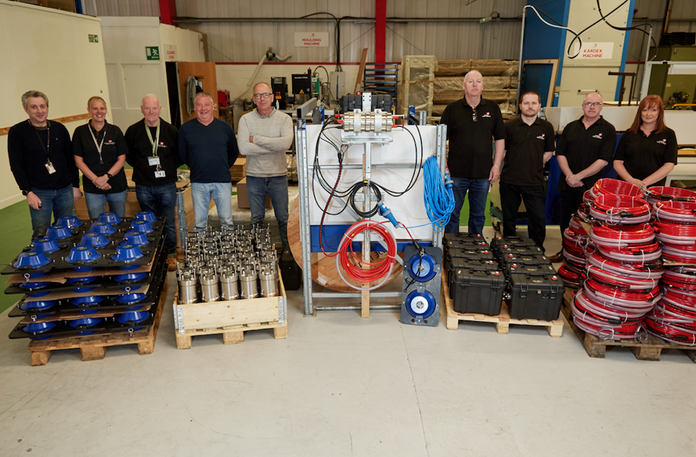Research points to effective new ways to combat sea lice.
GenusWave managing partner Steven Alevy explained that the company’s Acoustic Startle Technology (TAST) keeps seals away, lowering salmon stress and improving their immunity to sea lice infestations.
But he added that “the most significant story that is not being addressed in the industry is predation stress on farmed salmon”.
“It will be a revelation to the industry once producers actually focus on its impact. In fact, many conventional farm practices are likely to be changed,” said Salevy.
Stressors
The tech was developed and founded by marine biologists from the Sea Mammal Research Unit of University of St Andrews. The team completed three separate research studies on salmon farms over the last 10 years. This, they say, reveals an increasingly clear link between stress among salmon and a number of serious diseases, including sea lice infestation.

“Three major stressors have been shown to suppress fish immunity: seal predation, husbandry, and current methods of sea lice management, such as peroxide treatments, pumping systems, and thermolicers. Contrary to conventional wisdom, stocking density has not been shown to cause significant stress,” said Salevy.
Sea lice
GenusWave has developed two technologies: Sea Lice Disruption Technology (SDLT) and Targeted Acoustic Startle Technology (TAST).
TAST works by generating an auditory signal – like a dog whistle in reverse – that triggers the targeted mammals’ flight instinct, causing them to flee the area. As well as in fish farms, GenusWave hopes to install the tech in cars to avoid driver animal collisions.
“Sea Lice Disruption Technology (SLDT) emits a unique sound that interferes with the ability of sea lice to recognize or target salmon to be its host. This specific sound disrupts the host identification and host attachment process sea lice need to go through to complete their life cycle by stimulating salmon to produce more mucus,” he explained.
“In terms of production, we are on five out of the six top farms in Scotland, and we are going on some farms in Norway and the Faroe Islands,” said Salevy.
The tech meets the requirement of the U.S. Marine Mammal Protection Act (MMPA). Helpful as in 2019, it was reported that Scottish salmon could be banned in the USA as early as January 2022 if fish farmers use certain acoustic deterrent devices. The industry was were handed a deadline of March this year to prove that their laws match up.

Cortisol
“Can you imagine, after a sea lice treatment, all of the salmon are stressed, cortisol levels are up for every fish on the farm – and that sends out a signal to all sea lice to come and attach, just when the salmon are at their most vulnerable?” he questioned.
Salevy explained that he had examined hundreds of research reports, talked with world-leading marine biologists, and conducted their own rigorous investigation “all to understand what’s going on in the aquaculture industry regarding stress and sea lice.”
Salevy pointed to crucial new research which discovered a link between plasma cortisol concentration and the L. salmonis copepodid infestation level, that “current lice management strategies may, paradoxically, increase re-infestation risk by handling or otherwise stressing the salmon.” (Delfosse & Pageat, 2021).
Other studies, including one by Mordue & Birkett (2009), found that: “it might be possible that a copepodid is more attracted to and swims towards a stressed salmon, which could be a less immunocompetent fish, i.e., a most suitable host, to maximize its chances of attaching to salmon skin by developing its frontal filament; then, the copepodid could settle on it and complete its life cycle.”
“Now that’s what informs the industry that it is incredibly critical to reduce stress in every aspect as possible. That means minimising husband and eliminating predation stress, keeping seals away from the farms so their mere presence does not cause,” added Salevy.
“Nothing to lose”
Salevy added that an important backdrop to this is that salmon can smell seals a great distance away. So not the seals themselves a problem, their odour leads to the production of more cortisol and less mucus.
“The industry is too big and important to allow itself to be seriously hobbled by diseases such as sea lice,” he said.
“Salmon farmers may benefit by examining the problem with a fresh pair of eyes – and by keeping an open mind to the research and the innovations that have been inspired by it. They have nothing to lose, and a lot to gain,” concluded Salevy.

